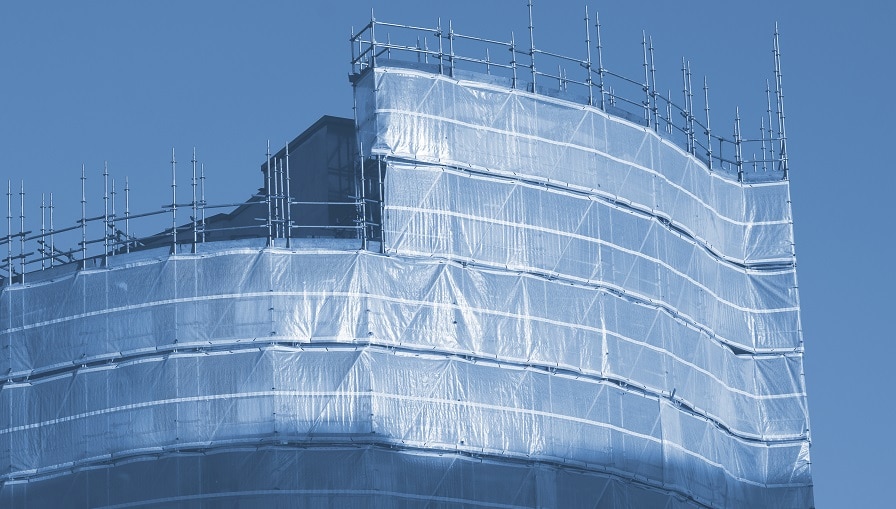The construction industry is accident- prone, with an accident fatality rate that is twice as high as the average rate for other sectors. The average rate for minor accidents is innumerable. This indicates that building sites are a nightmare for health and safety.
The construction sites are ridden with hazards and potential risks that can lead to accidents. All construction site hazards must be managed to make work sites safer, but certain hazards are a priority and must be dealt with immediately. This list includes the common hazards found in construction sites as well as how they can be managed.
1. Moving objects
A building site is a dynamic place, and the hazards on the site change over time as a building project progresses. This is because of mobile equipment such as diggers, overhead lifting gear, and supply vehicles being operated in the same space, thereby increasing the likelihood of accidents. The right Personal Protective Equipment (PPE), such as safety helmets, biohazard suits, and high visibility garments, is often required by staff on-site to handle the risk of hazards caused by moving objects.
2. Avoid standing close to moving objects
Be conscious of your surroundings. There may not be beepers or warning lights on certain moving objects.
3. Noise
HSE reports showed that from 2007 to 2011 over 1505 construction work-related claims were recorded in the UK. Out of these cases, 10 were women and 1,495 men. This goes to show how the high level of dangerous noise present on a construction site can pose a challenge to worker safety. Construction workers’ reluctance to obey health and safety guidelines by wearing protective gear further aggravates the issue. Another significant concern is the use of counterfeit or bad hearing protectors. Safety tip: make sure you have the right protective hearing gear and ensure you use it.
4. Asbestos
Asbestos consists of six distinct fibrous minerals. When materials that contain asbestos are damaged or disturbed, these fibrous minerals are released into the air. Even though it occurs naturally, inhaling this fibrous mineral triggers serious health issues, and in many cases, exposure can be fatal. Asbestos inhalation has been linked with diseases such as lung cancer, pleural thickening, and asbestosis.
The deaths of more than 5000 building employees per year are the result of asbestos exposure, with almost 20 tradesmen or more killed every week. The numbers are high because an estimated 500,000 public buildings in the UK contain asbestos. Safety precaution: informing your employees of asbestos in your worksite is your duty as an employer. Additionally, your workers should be trained on the proper procedure to follow if they come across asbestos or asbestos-containing materials on site.
5. HAVS
HAVS is a debilitating and impairing disease of joints and blood vessels that can also cause nerve dysfunction. The extended use of hand-held power tools like ground working equipment and vibrating power tools is the primary cause of this disease. Fortunately, HAVS can be avoided; however, it is permanent when the harm is done.
Approximately 2 million construction workers are in danger of contracting Hand Arm Vibration Syndrome according to HSE reports. Pain and discomfort in the fingers when exposed to cold temperatures and an inability to work are key symptoms of HAVS. Safety tip: do not use any hand-held power tools without wearing the necessary PPE gear. Regular maintenance for on-site equipment is also a must.
6. Falls
Falls are the major cause of death on construction sites, as more than 40% of on-site accident fatalities are caused by falls. Safety tip: always use fall protection on site irrespective of the fall distance. Another crucial safety tip is to conduct regular checks of your fall protective gear before use. Keep an eye out for stress cracks, knotted or frayed ropes, or broken areas.
The proper scaffolding structures are essential for any construction project. Make your construction safer today by making use of JL Scaffolding’s creative scaffolding services for your project. Contact us right away.
7. Takedowns
For anyone who has dealt with construction projects, it is obvious that construction is not only about building or erecting structures; dismantling structures is also a part of the process. Furthermore, many construction projects involve underground work, which could mean having to excavate or bore into the ground creating trenches and holes that can lead to injuries, major accidents, and even fatalities if the structure collapses.
Safety measures: there must be a periodic inspection of collapse risks throughout the project’s phases. In addition to this, the functionality of short-term structures like protective barriers must be assessed frequently. Identify risk zones clearly and place visibility signals to alert workers of these zones.
8. Vehicles
Moveable machines and vehicles are used for work on construction sites. The NHASA reports that being hit by a moving vehicle is among the most common causes of fatal accidents on construction sites. Safety precautions: a complete review of the usage of vehicles and safety procedures – designated transport and transit zones with the right sign and barrier systems should be in place. Always put safety first.
Construction site accidents can be reduced through the implementation of safety passes. Establishing a safety plan that provides safety information for workers on site is a very smart move to make. Invest in quality PPE for all workers on the construction site. Conducting routine maintenance of tools and machinery could be the difference between life and death in the long run; do not skip the checks.














